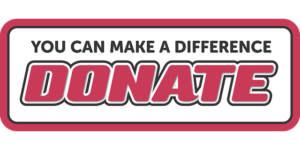16 Places You Can (and Should) Be Thanking Donors
6 Ways Donors Give, and How to Thank Them in Each Situation
The data is clear: Thanking your donors early, often, and continuously pays you back many times over.
Guidestar reports donor research that found that first-time donors who receive a personal thank you within 2 days of giving are four times more likely to give again. In an era where it has become increasingly difficult to preserve your recurring donors, that’s a statistic that ought to wake you up.
They also referenced a 2013 study from Roger Craver finding that a simple 3-minute phone call boosted first year donor retention by 30%, as well as subsequent studies finding similar numbers.
So yes, the data is clear: You should be thanking your donors. A lot.
Now, deep down, we all know this. These generous people are giving you their money and getting nothing in return. Were this to happen in person, of course you would thank them. So just because they might be giving online or through the mail doesn’t in any way reduce the necessity – the high priority – of thanking your donors.
The question is, where and when should you thank your donors, and how should you do it?
Where and When to Thank Donors to Your Nonprofit
What follows is a list of most of the possible places people donate to your nonprofit, and the ways you should thank them in each case.
Where They Gave: Your Donation Page
Where You Should Thank Them:
- > On your donation page – before they give

Image by Mary Pahlke from Pixabay
After making your final case for giving in a few short paragraphs on your donation page, you should also include a simple one-sentence thank you, in advance of giving. Depending on your CRM, you might even be able to fit this in your giving form, perhaps near the button they click to send in their donation.
- > On a standalone thank you page
After they click the button to send their donation, what happens?
Far too many nonprofits make the mistake of just letting the default process take place, whatever your CRM has as a placeholder. Sometimes this is a simple and generic ‘thank you.’ Could be worse – and often is, with antiseptic dehumanized phrases like “your donation has been processed” undertaking the task of showing appreciation to your donors.
Could be much better too though.
An optimized thank you page should communicate immediate impact that results from the donation. “Thanks to your gift, more kids will now receive medication for preventable disease.” Include a photo, perhaps a video from your CEO or from an affected person.
Show the donor what they have just accomplished by giving. Make them feel great about their decision, immediately.
See the worst mistake you can make on your thank you page
- > With an autoresponder email
Immediately after giving, while they’re reading your awesome thank you page, they should also receive a thank you email. This is separate from the computerized receipt they can use for tax purposes. Do the same thing in the email that you did on the thank you page. Why?
Because they will only see that thank you page once. It is not a page they will return to, unless they give again. But the email will stay with them until forever, unless they delete it. Put ‘thank you’ in the subject line, so every time they see the subject without even opening the email, they get thanked again.
It’s omnipresent gratitude in their inbox, until they delete it.
- > Thank you card in the mail
Finally, a few days later, they should receive a thank you note. This can be as simple as a card. Doesn’t have to be a full letter. Your budget is up to you here.
And in the note, if not also in the email, you should mention the amount they gave, so they know you know them. We’ll share a bit more about what to include in your thank you notes a bit later.
Where They Gave: At a Fundraising Event
Where You Should Thank Them:
- > Live, to everyone present
At the end of your event, the emcee or a representative from your nonprofit should say thank you to everyone who came and participated. Easy and free. Just have to remember to do it.
- > Post-event email
Send an email to all your event attendees – and only them, ideally – thanking them for their participation and generosity. Include the total amount given at the event. This is your gross receipts, not your net. It includes sponsorships, ticket prices, donations given by people who could not attend – everything. The highest number you can find, in other words.
Again – this is a segmented email. You can report the total again later in an email to your entire list. But as soon as possible after your event – ideally the very next day – report what was accomplished to your attendees, and show how their gifts have made a difference.
- > Thank you card

Image by June Laves from Pixabay
A couple weeks later, send out a thank you card restating your gratitude to everyone who attended your event. And in this note, if you have the information, we would recommend also hinting at the date of next year’s event.
If you don’t have that date yet, make a general mention that you hope to see them next year. You could also take this chance to offer a one-time-only steep discount at tickets for next year. I have yet to see a nonprofit take this step. It works very well in the business world.
You might get 10, 20, or 50 people to sign up for next year’s event, a full year away, even not knowing the date. And if they end up not being able to come, their ticket price becomes a donation.
Where They Gave: From Direct Mail
Where You Should Thank Them:
- > With a thank you letter
Since they gave over direct mail, you should thank them by mail as well. Your direct mail donors are a special bunch, often your most committed and loyal donors. This should not be a simple card like in the previous places. Make this a full letter. Can be just one page, but don’t scrimp on the details of what their gift has accomplished.
Where They Gave: As a Major Donor
Where You Should Thank Them:
As often as possible, but respecting their preferences. Major donors are not like your regular donors. If you have met with them individually to cultivate this gift through a major gifts officer, your gratitude to them will look different than in most of these other situations.
Some major donors want to remain anonymous, so even if it’s a really large gift, you must respect that. But if they are okay with it, thank them in your other communications, in public. If they gave a matching gift, thank them during the matching gift campaign – even anonymously if that’s their preference.
So while this will look different for each major donor, in general, you should thank them through as many channels as possible – by phone, by mail, and in person being the top three.
Where They Gave: After a Campaign
Where You Should Thank Them:

Image by Chrystal Elizabeth from Pixabay
Campaigns seek to meet a specific need or goal. Once the campaign has ended – whether the goal was met or not, thank your campaign donors in the following ways:
- > With a thank you letter
Campaigns accomplish big goals most of the time. The successful completion of one means your donors have done something truly great. This is worth a one or two page letter in the mail. Just an email isn’t enough, especially if it’s a really big campaign.
- > With a phone call
Depending on the size of your campaign, if feasible, call everyone who gave and thank them personally. If they don’t answer, leave a message. If your campaign was very large and thousands of people donated to it, pick and choose the people you want to thank by phone.
This could be everyone who gave over a certain amount. It could be all your first-time donors (see the statistic at the opening of this article again). It could be all your recurring donors who also gave beyond their regular monthly gifts. You decide, based on your volunteer, board, and staff capacity.
- > In person if possible
For larger donors who gave to your campaign, try to meet them in person. Treat them like major donors, whether this was their first large gift, or tenth.
- > Hold a live thank you celebration event (optional)
These are wonderful opportunities to build community and deepen your donors’ commitment to your nonprofit. Many campaign donors tend to be first-time donors. A live event can help turn them into recurring donors.
Again, depending on the size of your campaign, this sort of event may not be possible for everyone to attend.
Where They Gave: As a Recurring Donor
Where You Should Thank Them:
- > With a thank you letter
Recurring donors are your most valuable source of revenue. Why? Because recurring donors tend to be your best source for finding future major donors. Anytime someone signs up to give on a monthly basis, have a pre-written letter ready to go, and include the monthly amount they have chosen to give.
- > With a phone call

Image by Patrice Audet from Pixabay
Likewise, a recurring donor should receive a personal phone call. It could be from a board member, the executive director, another key staff member, or even a volunteer. I’ve been thanked by phone as a recurring donor. It catches your attention because it is so unlike what we are accustomed to. It feels great. For me anyway, it virtually guaranteed that I would continue giving, which I did for several years.
- > Hold a live thank you celebration event (optional)
For recurring donors, this holds the same value as your campaign donors. It builds community. You can invite all recurring donors to each event, or just the new ones over a set period of time. Depending on how many recurring donors you get each year, you might do this once, twice, or three times per year.
How to Thank Your Donors
The focus of this page is where and when to thank your donors. But here are a few tips on what to include in your thank you letters, emails, and web pages. You can even do some of this in person and over the phone.
- > Include a testimonial that includes gratitude
This could be from a beneficiary of your nonprofit, or it could be from someone who works in the field, however that looks for your organization. But it should be a real quote that thanks the donor and shows what a difference they have just made.
- > Focus on the donor, not your organization
Your thank you letters should be all about ‘you,’ not ‘we.’ Tell the donor what they have done, and focus exclusively on that. Don’t tell them how much more ‘we’ can accomplish. Tell them what ‘you’ have accomplished.
- > Communicate the impact
Tell a story that shows what their donation will do. Describe a program they have made possible. But again, focus on the people the program will help, not on the fact that your organization can continue operating it. Example, “Because of you, 85 people at risk of blindness will receive treatment that will preserve their vision.”
A program is doing that, but you’re focusing on the human impact. You don’t have to go on and on about this. A few quick sentences does the job.
There’s a lot more to donor gratitude, of course, but hopefully this gives you a helpful list of when to thank your donors, and where to do it using media, phone, or face to face communication.
Gratitude leads to growth!
Want more content? Get weekly nonprofit fundraising and copywriting tips, strategies, and motivations in the ProActive Insights newsletter.


